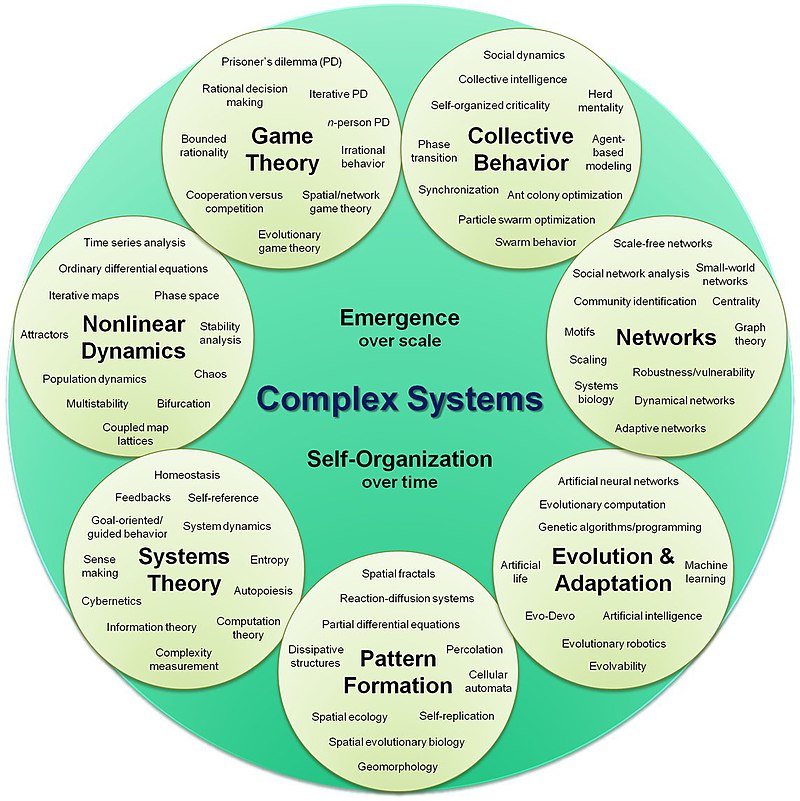- Chaos is, by definition, a non-linear mixture of Order and disorder.
- The existence of Chaos shows that even in a deterministic system, we may not accurately predict the future because of its sensitive dependence on initial conditions.

- The human body is not a simple machine but an amazingly complex chaotic system. Our bodies conform to a set of non-linear, dynamic rules.
- Heisenberg’s principle is a description of reality. Many natural systems are chaotic. The neural processes and systems in the brain are the most complex in the human body. It is not a single process, but millions upon millions happening simultaneously. Neurons communicate with other neurons using action potentials and neurotransmitters.
- The wiring of the brain is astoundingly complex. Neurons have different degrees of dendritic branching and axons bifurcation, meaning one axon can simultaneously send the same message to many neurons. And then, you must factor in glial cells, which also function in computation. At the molecular level, it gets infinitely more complicated. The number of neurotransmitters, neuromodulators, receptors, and second messengers is vast, having particular functions. The significant number of different neurotransmitters adds to this complexity. A signal might be inhibitory or excitatory depending on the type of neurotransmitter and receptor. Synapses can be strong or weak, depending on how active they are. It organized the billions of neurons found in the human brain in a manner that is extremely hard to decode because of its complexity.

- We do not know how neurons lead to a conscious experience. Those billions of unconscious neurons can lead to a conscious entity (you) is something we don’t yet understand. Our axon sends a signal as a cascade of channels opens up. Ions are rushing in and segment the axons become more positive. Once a segment has become positive, it triggers the next, and then it becomes negative again.
- Chaos does not limit itself to the distribution of quantum energy levels; it also works its way into the wavelike nature of the quantum world.
- Chaotic systems are deterministic, meaning if you have the same initial condition, you will have the same trajectory. There is always some uncertainty in the initial state. Sensitive dependence on initial conditions distinguishes chaotic systems and evolution through phase space that appear to be quite random. Decomposed chaotic functions in an infinite linear system are systems that can be chaotic.

- Chaotic systems are unstable because they do not shrug off external influences that provide limited guidance for our world’s chaotic, fractal nature. Many natural objects exhibit fractal properties. A Linear system is chaotic only in infinite dimensions. A chaotic system needs to show it is topologically mixing and has dense periodic orbits.

- Linear control systems have one operating point at a time. The stability of these systems does not depend upon initial conditions. Output can change its magnitude, but its baseline form never changes regarding input.
-
Non-Linear systems follow superposition and homogeneous theorem separately. They have multiple operating points with an indefinite response. Output changes to its parameters from magnitude to phase and frequency input form are not realizable—deterministic systems whose behavior can be predicted. Chaotic systems are predictable and then ‘appear’ to become random. In a chaotic system, slight differences in the initial conditions can cause massive changes.
-
Chaos is the opposite of Order and harmony.

- Chaos leads to Order, and Order leads to Chaos in multiple random feedback loops in never-ending cycles. Unknown factors and variables and strange ways they interact at different levels relative to each other and the possibility of fundamental randomness.
- Random behavior is non-deterministic. You can’t predict the state of play at a future time. Chaotic behavior is fully deterministic if you know the initial state, but any slight imprecision in that initial state will grow exponentially in a flash.






